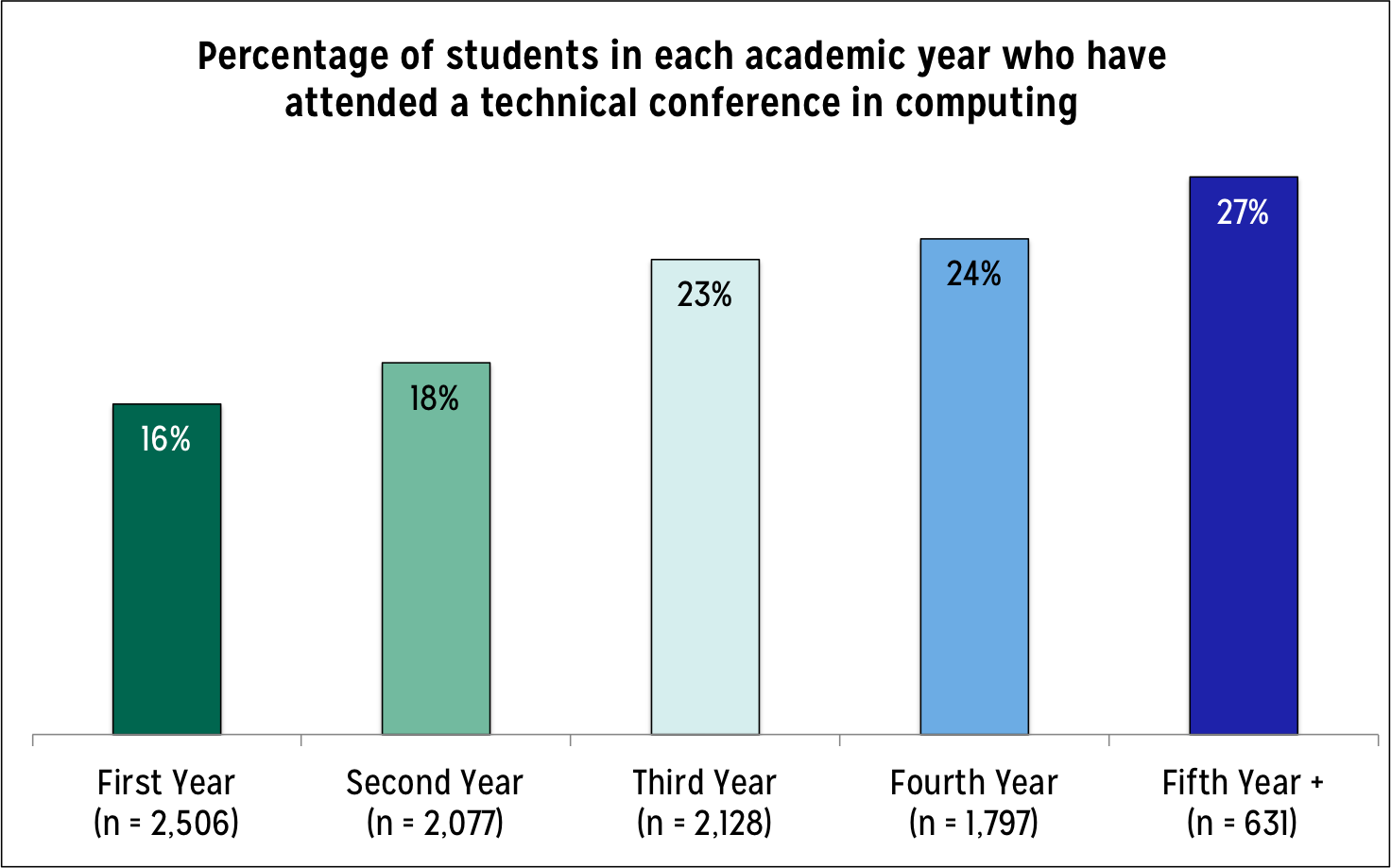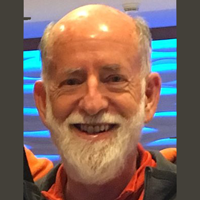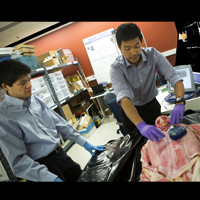Which Students are Attending Technical Conferences in Computing?

Using Data Buddies data, CERP measured student participation in technical computing conferences as a function of their academic year. Analyses revealed that first year and second year students were proportionally less likely to attend a technical conference in computing compared to their upper-division peers, p < 0.05. This finding is not surprising, as first and second year students are early in their major coursework and may not yet have engaged in research activities. However, these reasons should not be deterrents to faculty deciding which students to take to conferences. In a recent ACM Inroads article, Janet Davis of Whitman College and Christine Alvarado of the University of California San Diego argue that undergraduate students can gain exposure to real-world contexts, research innovations, and opportunities to broaden their professional network in the field of computing through attending conferences. This suggests conference participation may increase student engagement in computing research, which in turn may help retain these students in computing, particularly among first and second year students. It will be important for faculty members to mentor lower-division students preparing for their first conference so that these students feel comfortable interacting with their peers and the broader community, and get the most out of attending these conferences.
Notes. During the 2016 semester, CERP surveyed 11,753 undergraduate students from a sample of computing departments across the United States. Of those, CERP generated a sample of students who were not transfer students, n = 9,674, to create an accurate reference of students’ academic year. The final sample included 27% first year students, 23% second year students, 23% third year students, 20% fourth year students, and 7% fifth year (or longer) students. Students were asked the following question with ‘Yes’ or ‘No’ response categories: During the past year, were you involved in any of the following groups or activities: Technical conferences related to computing. A chi-square test of independence was calculated comparing technical conference attendance of students by academic year. A significant effect of academic year, x2(4) = 80.86, p < .01, revealed a different rate of conference attendance among the five academic years. To test individual differences between the groups, proportion z-tests were calculated and significance was determined using the conventional p ≤ .05 level. First year students were less likely to have attended a technical conference related to computing than second, third, fourth, and fifth year students, p ≤ .05. Similarly, second year students were less likely to have attended a technical conference compared to third, fourth, and fifth year students, p ≤ .05.

This analysis is brought to you by the CRA’s Center for Evaluating the Research Pipeline (CERP). CERP provides social science research and comparative evaluation for the computing community. To learn more about CERP, visit our website and subscribe to our newsletter.
This material is based upon work supported by the National Science Foundation under Grant Number (CNS-1246649; and DUE-1431112). Any opinions, findings, and conclusions or recommendations expressed in this material are those of the author(s) and do not necessarily reflect the views of the National Science Foundation.









